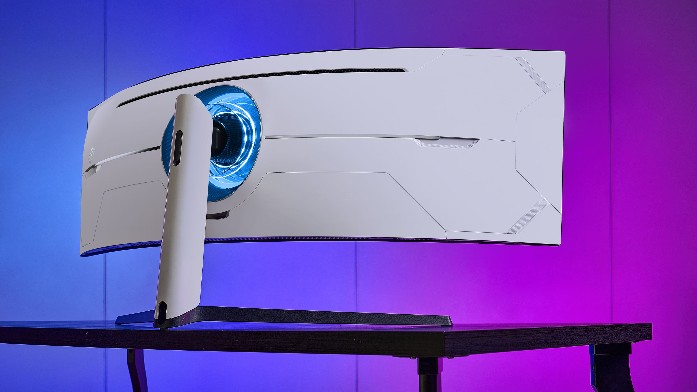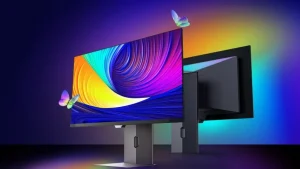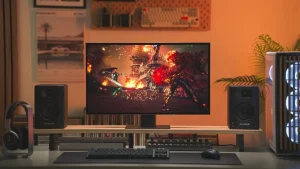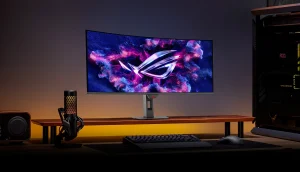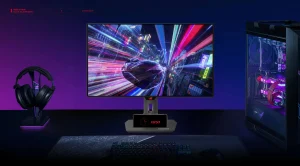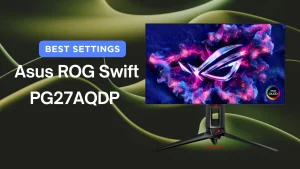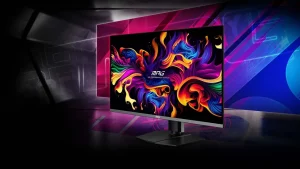The Samsung Odyssey G9, renowned as one of the best gaming monitors on the market, offers gamers an immersive and visually stunning experience. With its impressive specifications, including a massive 49-inch curved QLED display, a blazing 240Hz refresh rate, and a captivating 1000R curvature, it’s no wonder that gamers around the world seek to harness its full potential.
However, to truly elevate your gaming experience, it’s essential to configure the settings of the Samsung Odyssey G9 correctly. In this article, we’ll embark on a journey to discover the optimal settings for the Samsung Odyssey G9, especially when paired with an Nvidia graphics card. From refresh rates to colour calibration and beyond, we’ll explore the intricacies of fine-tuning your monitor to ensure that you get the absolute best for Samsung Odyssey G9, enhancing your gaming adventures to a whole new level.
So, let’s dive into the world of gaming perfection and uncover the settings that will transform your Odyssey G9 experience.
Table of Contents
Resetting Your Monitor
Before diving into the settings, it’s a good practice to start with a clean slate. You can reset your Samsung Odyssey G9 by going to the support menu and selecting “Reset All.” This ensures that you’re working with default settings and can make adjustments from there.
Here are the Best Settings for Samsung Odyssey G9 Monitor:
Video Control Panel
To access and fine-tune your Samsung Odyssey G9 settings, open the video control panel. Here are the key settings to consider:
- Refresh Rate: Set the refresh rate to 240Hz for smoother gaming experiences.
- Response Time: Make sure the response time is set to the fastest option for reduced motion blur.
- Adaptive Sync: Disable adaptive sync temporarily if you can’t change the response time setting. Once you’ve set it to the fastest, you can re-enable adaptive sync.
- Low Input Lag: Enable this option for minimal input lag, ensuring your actions are reflected on the screen without delay.
Nvidia Graphics Card Settings
For those with Nvidia graphics cards, there are additional settings to configure in the Nvidia control panel:
- Driver Update: If you’re using a 3000 series Nvidia graphics card, ensure you have at least driver update 15.1 to prevent potential black screen issues.
- Nvidia Color Settings: In the Nvidia control panel, set the colour settings to RGB, 10-bit, and dynamic.
- Resolution: Choose your monitor’s native resolution (240Hz) for the best visual experience.
On-Screen Display
Explore the on-screen display (OSD) settings for the Odyssey G9. You can adjust these to your personal preference:
- Local Dynamic Brightness: Decide whether to enable or disable local dimming based on your HDR preferences.
- HDR: Depending on your preferences, you may want to disable HDR in Windows settings, as it can sometimes make the screen appear too dark.
- Power LED Indicator: Customize the power LED indicator to your liking, ensuring it’s blue when the monitor is off if you prefer.
Additional Nvidia Control Panel Settings
Within the Nvidia control panel, there are more settings to consider:
- Triple Sampling Buffering: Disable this to reduce input lag.
- Power Management: Set it to “Optimal Performance” to maximize performance.
- G-Sync: Enable G-Sync, not only for full-screen gaming but also for borderless windowed modes.
3D Settings
In the Nvidia control panel, under 3D settings:
- Image Sharpening: Keep this off to maintain image clarity.
- Pre-rendered Frames: Avoid increasing this setting to minimize input lag.
- Low Latency Mode: Set it to “Ultra” for the lowest input lag.
Picture Mode Preferences
Finally, experiment with the different picture modes available on your Samsung Odyssey G9. While personal preferences play a significant role, here’s a general guideline:
- High Bright: Suitable for dark games.
- FPS Game: A balanced mode for various gaming scenarios.
- RTS Game: Offers a slightly darker but balanced visual experience.
- RPG Game: Adjusted for role-playing games.
Keep in mind that brightness levels may vary depending on the selected mode. It’s recommended to calibrate the brightness and colour settings to your liking.
Conclusion
The Samsung Odyssey G9 is an exceptional gaming monitor that can be fine-tuned to meet your specific needs, ultimately providing a tailor-made gaming experience. With its impressive capabilities, including a massive 49-inch curved display and an astonishing 240Hz refresh rate, this monitor is designed to deliver unparalleled visuals and responsiveness.
By following the recommended settings and tweaks mentioned earlier, you can ensure that you’re getting the best performance and visual experience from your Samsung Odyssey G9, especially when paired with an Nvidia graphics card. These adjustments optimize not only the monitor’s refresh rate and response time but also enhance color accuracy and reduce input lag. The result is a gaming setup that can keep up with even the most demanding titles, delivering smooth gameplay and stunning visuals.
Whether you’re immersing yourself in the vast landscapes of an open-world adventure or engaging in high-stakes competitive gaming, the right settings on your Samsung Odyssey G9 can make all the difference. So, embrace these optimizations, fine-tune your gaming rig, and get ready for hours of exhilarating gameplay.

